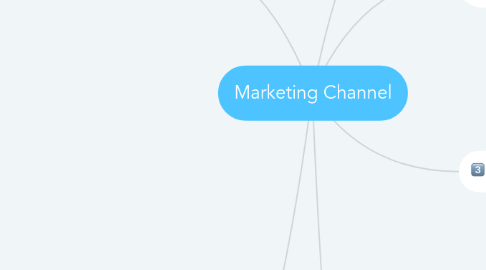
1. Characteristics of a Channel
1.1. If a wholesaler or a retailer is removed from the channel, its function will either shift forward to a retailer or the consumer, or shift backward.
1.2. All channel institutional members are part of many channel transactions at any given point in time.
1.3. Able to complete all these transactions to your satisfaction, as well as to the satisfaction of the other channel members, is due to the routinization benefits provided through the channel.
1.3.1. Routinization means that the right products are most always found in places where the consumer expects to find them
1.3.1.1. Catalogues or stores
1.3.1.2. Comparisons among products are possible
1.3.1.3. Prices are marked
1.3.1.4. Methods of payment are available
1.4. There are instances when the best channel arrangement is direct, from the producer to the ultimate user.
1.5. Although the notion of a channel of distribution may sound unlikely for a service product (such as health care or air travel), service marketers also face the problem of delivering their product in the form and at the place and time demanded by the customer.
2. Types of Marketing Channels
2.1. Direct Selling
2.1.1. The marketing and selling of products directly to consumers away from a fixed retail location.
2.1.2. through the party plan, one-on-one demonstrations, personal contact arrangements as well as internet sales.
2.2. Selling Through Intermediaries
2.2.1. Intermediaries such as wholesalers and retailers are utilized to make a product available to the customer is called an indirect channel.
2.2.2. Producer/manufacturer –> agent –> wholesaler –> retailer –> consumer
2.2.2.1. Used when there are many small manufacturers and many small retailers
2.2.2.2. An agent is used to help coordinate a large supply of the product.
2.3. Dual Distribution
2.3.1. Manufacturer or wholesalers uses more than one channel simultaneously to reach the end user.
2.3.2. Sell directly to the end users as well as sell to other companies for resale.
2.3.3. Ex:business format franchising
2.3.3.1. franchisors, license the operation of some of its units to franchisees while simultaneously owning and operating some units themselves.
2.4. Reverse Channels
2.4.1. From consumer to intermediary to beneficiary.
2.4.2. You won’t find a producer
2.4.3. Only find a User or a Beneficiary.
3. Definition
3.1. the people, organizations, and activities necessary to transfer the ownership of goods from the point of production to the point of consumption.
4. Roles of marketing channel in marketing strategies
4.1. Links producers to buyers.
4.2. Influences the firm's pricing strategy.
4.3. Affecting product strategy through branding, policies, willingness to stock.
4.4. Customizes profits, install, maintain, offer credit, etc.
5. Functions of a Channel
5.1. Transactional functions: buying, selling, and risk assumption
5.2. Logistical functions: assembly, storage, sorting, and transportation
5.3. Facilitating functions: post-purchase service and maintenance, financing, information dissemination, and channel coordination or leadership
6. Channel Selection
6.1. Consumer Preferences
6.1.1. Digital storefronts
6.1.2. The consumer’s habits and behaviors determine channel strategy more than anything else.
6.2. Cost
6.2.1. Low cost goods function best at low cost retail outlets.
6.2.2. Directly selling eliminates organizations between the user and the producer, and therefore can be even lower cost
6.2.3. Wholesalers are willing to buy large shipments of goods, but usually at a significant discount.
6.3. Brand
6.3.1. Alliances created will reflect on the overall branding initiatives of both partners.
6.4. Localization
6.4.1. Enter new markets through effective marketing channel selections.
6.4.2. A producer of household goods, for example, like laundry detergent could just as easily sell their goods in Europe as in the United States.

